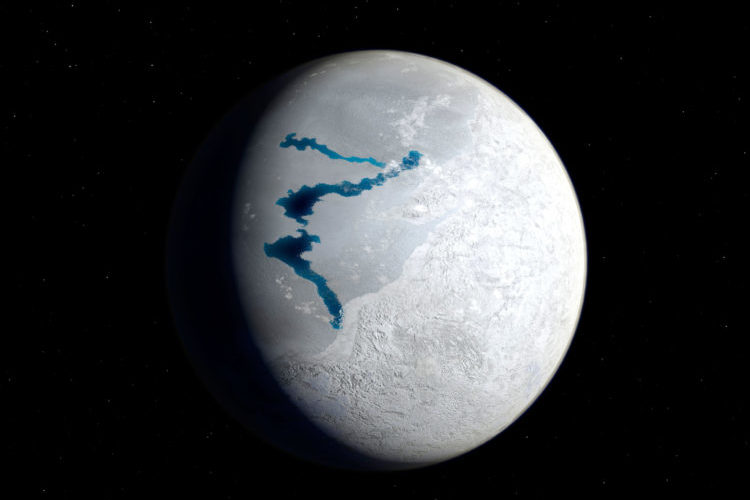
New research led by the University of St Andrews helps answer one of the most asked questions in geoscience: when did Earth start to become habitable to complex life?
The research, led by the School of Earth and Environmental Sciences, and published in the journal Proceedings of the National Academy of Sciences (PNAS) today (Monday 1 June) addresses this by defining which came first, the Great Oxidation Event (GOE) or the Paleoproterozoic snowball Earth period. The relative timing of these global events is pivotal to understanding changes in atmospheric composition and climate conditions, and how the first signs of life on Earth began.
Early in Earth's history the atmosphere lacked oxygen and as such would have been hostile to much of the life that covers the planet today. For over half a century, geoscientists have been trying to pinpoint exactly when atmospheric oxygen levels started to rise thereby allowing Earth to become more habitable for complex, multicellular life. Scientific consensus has been that the first notable rise in oxygen occurred during the Great Oxidation Event (GOE), sometime between 2.4 and 2.3 billion years ago.
Associated with this GOE, rocks from Canada, South Africa, Russia and elsewhere show that a major global glaciation took place. Geological evidence suggests that ice sheets extended to the tropics in what has been termed a 'snowball Earth' event. What has remained unclear though is the relative timing of these events.
The team of researchers focussed on defining the timing of the GOE by examining a set of drill-cores from north-west Russia (Fennoscandia), gathered as part of the international FAR-DEEP drilling programme. The scientists studied two rock formations, the older Seidorechka Sedimentary Formation and the younger Polisarka Sedimentary Formation.
The team conducted sulfur isotope analysis to determine what the oxygen content of the atmosphere was likely to have been at the time each rock succession was deposited. This required the development of a new analytical technique capable of analysing, with high precision, all four stable isotopes of sulfur. As a result, the University of St Andrews now has the only laboratory in the UK with this capability and only the second lab in the world to develop this particular method.
Changes in the relative amounts of each sulfur isotope in the samples allowed the team to identify whether the sulfur isotopes in these rocks follow a predictable ratio, mass-dependent fractionation or MDF, or whether they fail to follow a predictable ratio, indicating mass-independent fractionation or MIF. It is only possible to produce and preserve sulfur MIF in an atmosphere lacking significant oxygen; when oxygen levels rise, sulfur MDF takes over. Therefore, a common marker for the GOE is this transition from MIF to MDF in the rock record.
The analysis found that the older Seidorechka Sedimentary Formation preserves sulfur MIF but the younger Polisarka Sedimentary Formation preserves sulfur MDF conditions. This means that the GOE occurred sometime between the deposition of these two rock successions. Using previously published age constraints, the researchers concluded that the GOE must have occurred between 2.50 and 2.43 billion years ago. This is an older age for the GOE which was previously thought to have occurred 2.48 to 2.39 billion years ago and constrains a narrower, approximately 70 million-year time interval in which it could have occurred.
Lead scientist, Dr Matthew Warke, from the School of Earth and Environmental Sciences, said: "Our research allows us to say definitively that the GOE preceded the earliest snowball Earth glaciation in history as the latter is thought to have occurred around 2.42 billion years ago. This raises the possibility that the rise of oxygen in Earth's atmosphere during the GOE may have triggered one of the most severe glaciations the planet ever experienced.
"One possible mechanism by which this may have happened, that is consistent with our results and current thinking, is that rising atmospheric oxygen levels may have critically destabilised a methane-dominated greenhouse causing surface temperatures to fall rapidly. Other mechanisms may have operated, but crucially our results rule out any mechanisms that invoke that the snowball glaciation occurred prior to the GOE, resolving one of the most long-standing 'chicken or egg' problems in Earth history."
The paper The Great Oxidation Event preceded a Paleoproterozoic 'snowball Earth' is published in the journal PNAS and is available online.
Please ensure that the paper's DOI (http://www.pnas.org/cgi/doi/XXXX) is included in all online stories and social media posts and that PNAS is credited as the source.






